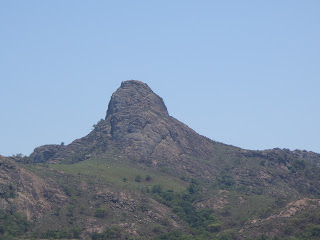I know I have been slack in posting over the last month or so, but now I have a life again outside of just travelling I have found other things to fill my spare time rather than just writing up my blog. Over the last few weeks Anna and I have been up to Polokwane (previously known as Pietersburg if you are looking for it on an old South African Map) to visit her family. Anna’s father, Ben Harris is a bit of a local legend around Polokwane. The old apartheid system in South Africa classified people into four categories based on ‘race’, with ‘Whites’ having access to the most benefits, then ‘Indians’, ‘Coloured’ and finally ‘Blacks’ having the least benefits and rights. While the Constitution of the Republic of South Africa now enshrines equality for all, many people still use this ‘racially descriptive’ terminology in a non offensive way to describe a person’s cultural heritage. The term ‘Coloured’ is used to describe people of mixed ‘Black’ and ‘White’ heritage (with sometimes Indian thrown in), and while the smallest of the four ‘race’ groups, they seemed to cause apartheid officialdom a real conundrum in trying to ‘classify’ people. Sometimes it came down to the ‘pencil test’! A government official would stick a pencil in your hair and if it fell out you would be classified as ‘White’, if it stuck in your hair you could be classified as ‘Coloured’ (true story).
Anyway, back to Anna’s Dad. As a coloured man living in apartheid South Africa he lived and rose above the many challenges that were thrown in his way. On the personal side he become a very influential businessman, owning many business’ around Polokwane:
 |
| The sign outside the Harris 'business office', listing the scope of the family business'. |
He became the first ‘non-white’ to own a farm in South Africa (which has now grown to four farms/rural properties):
 |
| Ben Harris and Anna at the original family farm. |
 |
| The 'driveway' leading in to the farm. On these two adjoining farms the family runs cattle, sheep, goats and pigs, which are often slaughtered and butchered in the family butchers. |
 |
| Another internal track on the farm. It is very green at the moment due to recent rains. |
 |
| All farms have got to have 'big toys'. |
 |
| The house (under renovation) and rondavel used by the family when staying on the farm. |
 |
| Out of interest I did a quick sweep near one of the water troughs and recovered six poacher snares. These snares were very lightweight and designed to catch guinea fowl. I will come back in mid Jan and do a full survey. |
He fought for and had established the township of Westernburg just outside Polokwane for ‘Coloureds’, which prevented the apartheid government from forcibly relocating the ‘Coloured’ people away from a mixed neighbourhood in the city into marginal land. Even now the main street of Westernburg is officially called Ben Harris Street, on which Ben Harris lives, and has many of the family business’:
 |
| The 'family home' in Westernburg. |
 |
| The cafe, service station and shop opposite the house in Westernburg. |
 |
| The office and bus workshop. |
As well as leading the ‘Coloured’ community by example he was covertly involved with the struggle for freedom against the apartheid regime, but since the new government has been a very strong and vocal advocate for reconciliation and acceptance of all ‘race’ groups in South Africa. Even now he still gets involved in sorting out community disputes. There has even been a book written about him!



















































